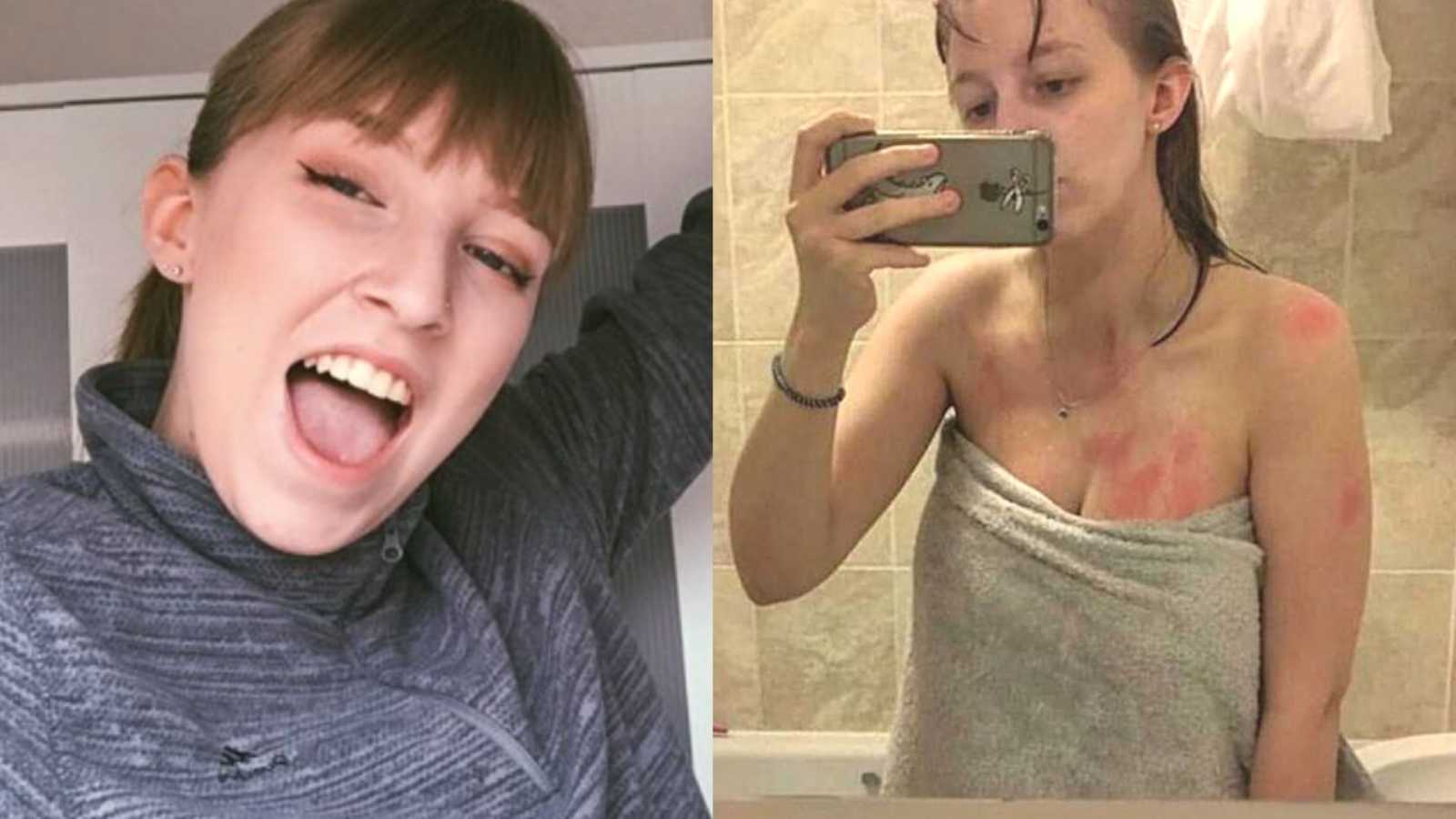“I’m Lindsey. I’m 22 years old, and I’m from North Hertfordshire, England. Most people are surprised when they find out I’m chronically ill, some even think I’m lying or over-exaggerating. I live with multiple invisible chronic illnesses and have done for most of my life. The main ones are Ehlers-Danlos Syndrome (EDS), postural orthostatic tachycardia syndrome (POTS), and aquagenic urticaria, but there are other undiagnosed condition still being investigated.
POTS was my second diagnosis, which shortly followed after aquagenic urticaria. POTS causes me to faint, black out, have chest pain, palpitations, extreme fatigue, blood pooling, brain fog, and many more on top of this. This condition really brings the tears for me. POTS tends to drag me down the most out of all of my conditions. I have been diagnosed for three years and we still haven’t found the right medications or management plan. For this condition, I am on calcium channel blockers to reduce the number of episodes where my heart rate pushes close to 200 BPM. I also take beta blockers for this condition to reduce my resting heart rate, which will, in turn, reduce the secondary effects from a constant high heart rate.

As a teenager, this was the most prominent difficulty I went through and it really made my time at school tough for me. Brain fog made me feel stupid, because everyone else in my class would understand and keep up and I just couldn’t absorb information. I would always have to go home and study with my parents over and over until the information stuck. I felt like I had to study 100 times harder than my friends, just to get grades that were just about good enough to get into my college course. I struggled every day in every lesson, whether I was interested in the subject or not, and it always felt like there was a wall blocking all the information going in and there was nothing I could do to fix this. Teachers would raise concerns to my parents, claiming I must’ve been daydreaming because I just didn’t know the answers to the questions asked in lessons. I could only wish I knew what condition I had back then. If I had known, perhaps I could have had extra support and extra time to accompany my cognitive impairment.

My most recent diagnosis is Ehlers-Danlos Syndrome (EDS), which was confirmed on paper in 2019. Ehlers-Danlos Syndrome is a group of rare connective tissue disorders. Connective tissues are found support your skin, bones, tendons, blood vessels, organs, and ligaments. EDS causes me to have dislocations and subluxations up to four times a day, which can be extremely painful. I have gastrointestinal issues, heart issues, endocrine system issues, and much more. EDS is very disabling for me and is suspected to be the cause of all my other conditions. I sadly still don’t fully have the full diagnosis for what type of EDS I have. I have been visiting doctors about this for over four years and have been living with it for nearly 22 years. When I look back at my childhood, I should’ve seen this coming. I was very prone to injury and had frequent tendonitis, breaks, sprains, and we always just assumed I was very clumsy.

I had a physiotherapist by the age of about twelve for my wrists and had to wear wrist splints on a regular basis. I’ve had plaster casts, neck braces, crutches, used wheelchairs, etc., through various injuries, and I’ve spent a lot of time in minor injuries. I remember being in a lot of pain and visiting the first aid room at school and being sent away, as it was most likely ‘growing pains,’ but I felt like it was completely different. It wasn’t until I was much older when some blood test showed some abnormalities, then EDS was suspected. I’ve since had many tests showing I have issues with my heart, stomach, muscles, tissues, nerves, and skin, all caused by this connective tissue disorder.

One part of EDS is how fragile our bodies are, and this is quite a significant part of this condition for me. If I have an itch and I itch too firmly, my skin will break and I’ll have deep raised scratches on my skin which stings, burns, and it just feels like a whole fuss just because I had an itch and I wasn’t paying attention and itched with more pressure than my skin can take. Part of the fragility of my body is my blood vessels can just burst with no injury or any sort of impact and will cause a petechial rash under my skin. EDS has affected my life significantly since all the more disabling symptoms started up, and I don’t know if I’m ever going to get my old life back, where I could run, dance, and be the sporty person I used to be.
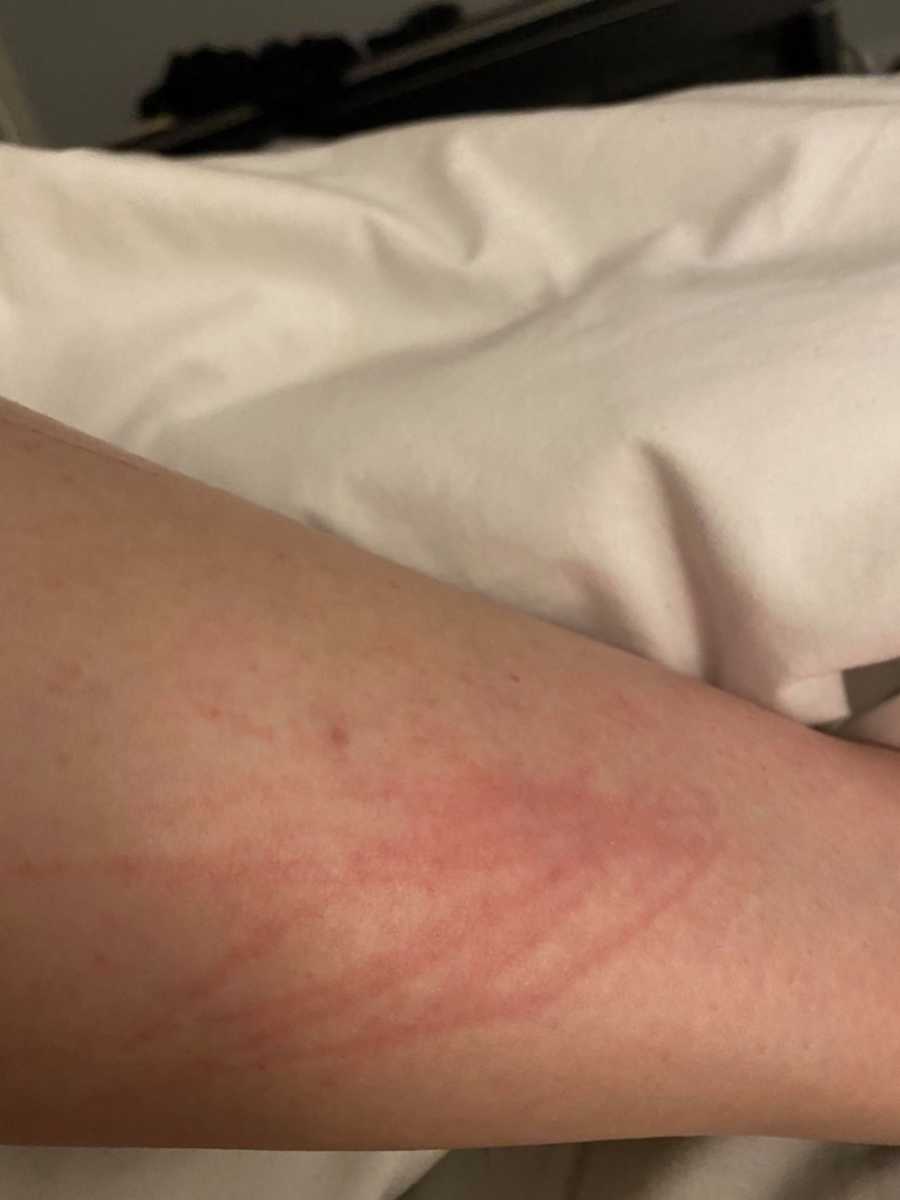
Lastly out of all my bigger conditions, I have aquagenic urticaria, and yes this is a water allergy. I was diagnosed by an NHS dermatologist in 2017. My story about my allergy went viral online and, as expected, I received a lot of hate about being a faker and making up my conditions. It is just a very rare condition. I take medications, use creams, am very particular about when I shower. When I come in contact with water I break out in nasty hives. I am allergic to my tears, sweat, rain, and regular water. Reactions can be swollen tongue, lips, stomach pain, regurgitation, and gastrointestinal issues. This condition can be caused by MCAS (mast cell activation syndrome), which is then suspected to be caused by EDS. MCAS can cause allergic reactions at any point in time, whether it is flushing in the face or full anaphylaxis. It can be scary, and the reactions are very irregular and unexpected.
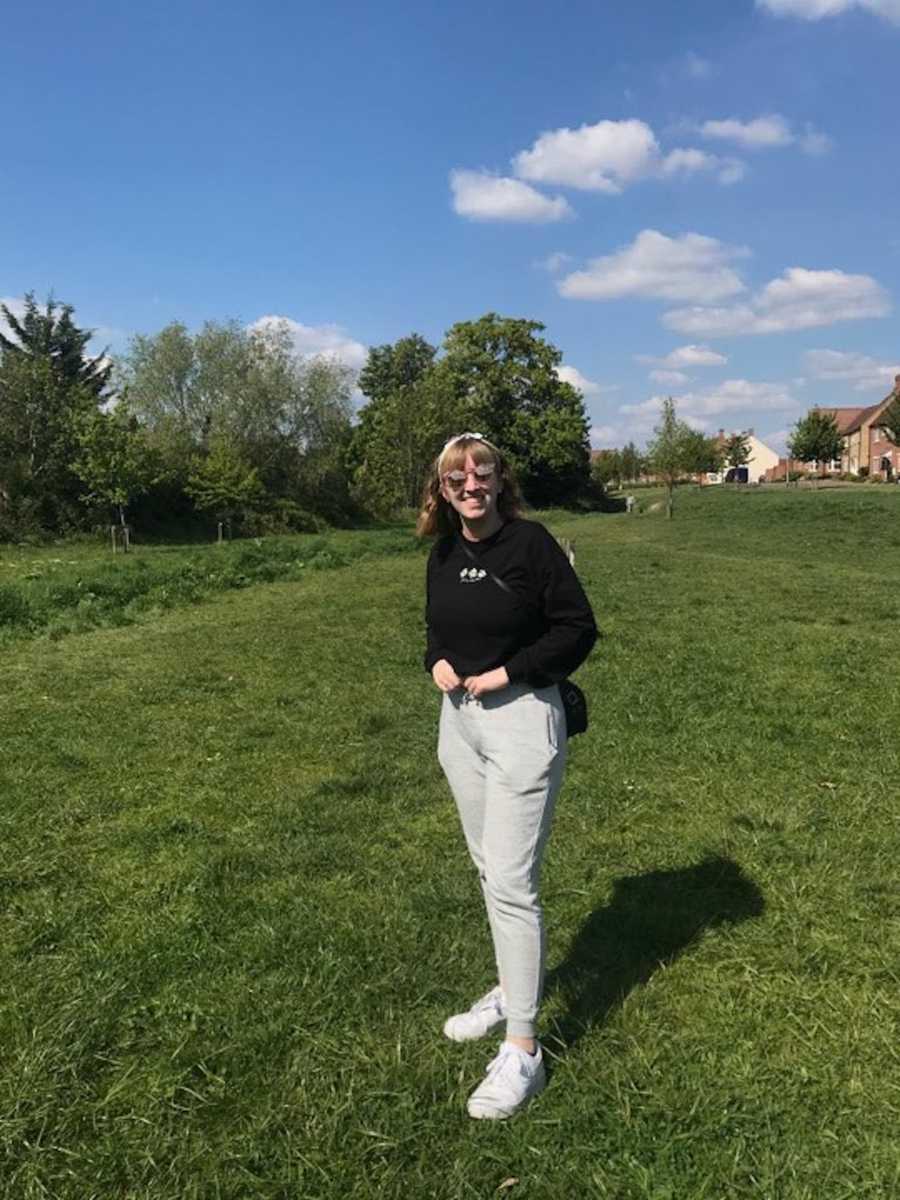
This condition can cause severe stomach pain for me, rashes all over my body, swelling in my legs, and breathlessness. What people have to realize is it’s just like any other allergy; you learn to adapt and you find out things that work for you through trial and error. When I was young, there were definitely signs this condition was present, but we thought it was a chlorine allergy. Typically, the symptoms would only present when water came in contact with my nose, and in a bath or shower water never really went inside my nose. However, I was a swimmer and would do lots of underwater tricks, where water would go inside my nose, causing lots of sneezing and pain inside my nose and throat. It stayed this way from the age I started swimming (around age five) until seventeen, roughly.
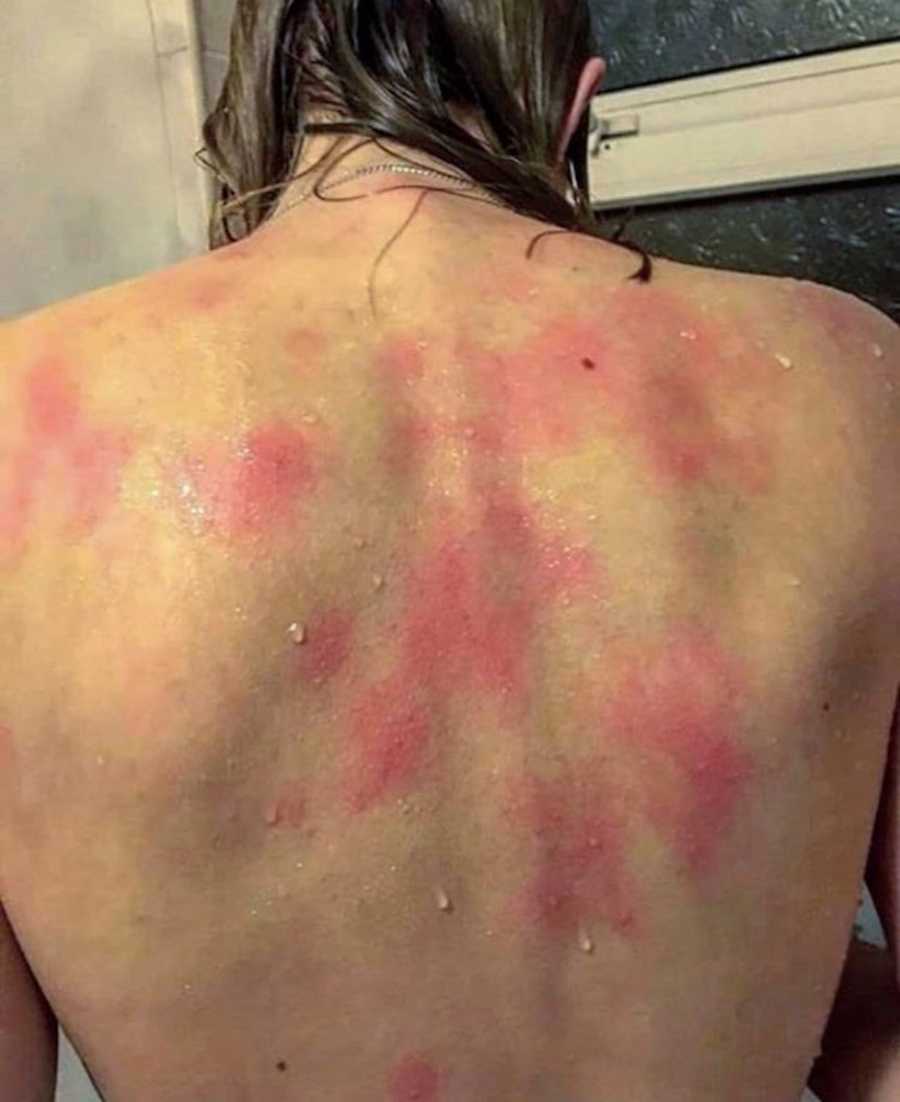
At around seventeen years old, I started developing hives and redness all over my back, chest, arms, and face. The hives got itchier over time, and I would have 30+ hives that all itched. It was most significant on my back. Now I have also developed heat intolerance, as a part of my POTS, which causes flushing, rashes, and a feeling of panic in hot temperatures. So, a warm shower now causes full body rashes down my arms, hives on my back, chest, and face, and is in no way a nice experience. However, due to what doctors expect is MCAS, I’m also allergic to my hair oils, meaning I shower everyday, otherwise my hair becomes extremely itchy. So, despite being allergic to water, I must shower every day. There are ‘alternative’ treatments available in other countries for chronic urticaria related conditions, however, in the UK my best option is antihistamines.
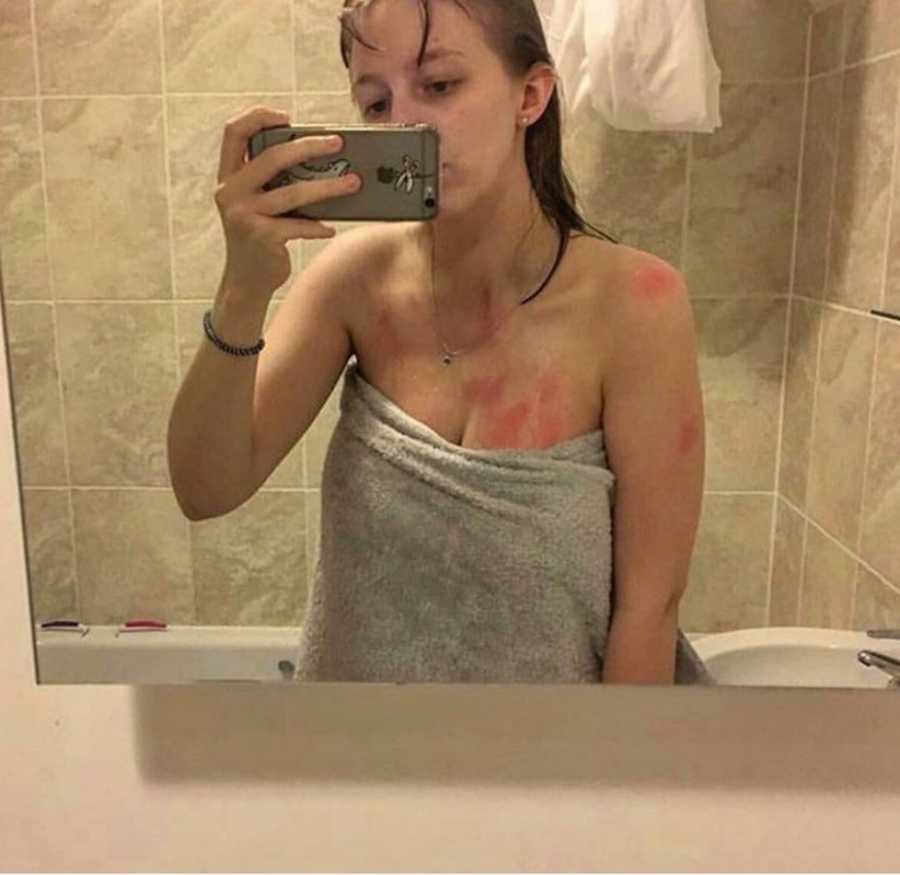
I want to raise awareness for aquagenic urticaria, POTS, and EDS. All are as important to me as each other, regardless of the rarity, as each affects me in different ways, and I am desperate for research to be done for all of them. Out of the three, EDS has the most research being done, but I still believe more is needed, and aquagenic urticaria has no research being done. I understand my conditions now more than I have ever done, and I learn new things all the time. My own disabilities have encouraged me to pursue a career within the NHS, and I am currently working on getting this arranged. I have to accept, though, I can’t get a role that’s as physical as I would like, and I’m having to look at different roles, but this is part of having a disability, learning what you can and can’t do. But I’m hoping one day if my conditions become more manageable and less painful, I will be able to go for a more physically demanding role.

My best supporters are my family and partner, and they’ve been there for me throughout all my diagnoses. They have been there in my appointments, through good news and bad news, and I am so grateful. I am also grateful for all my online support through my Instagram page. I share my story with photos of rashes and how I feel. I frequently get messages from people with the same or similar conditions, reaching out to me to let me know they’re there for me. I’ve made many long-distance friends through the social media platform. It is nice to know there are others experiencing different variations of the same conditions, or sometimes we could have two completely different conditions, but some symptoms overlap and we can bond over this. It feels good knowing no matter what time of day it is, there will always be someone on Instagram going through the same thing as me I can talk to.”
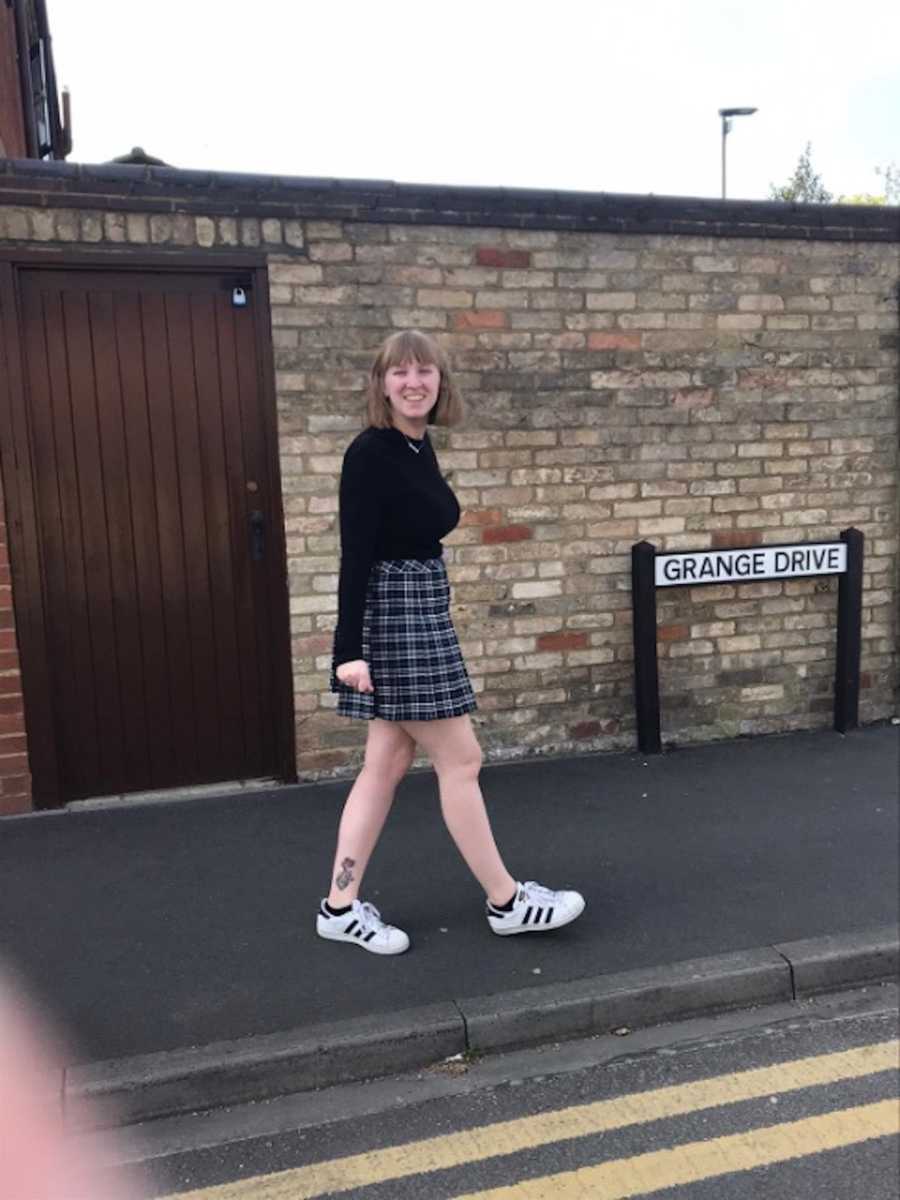
This story was submitted to Love What Matters by Lindsey Coubray of North Hertfordshire, United Kingdom. You can follow their journey on Instagram. Submit your own story here, and be sure to subscribe to our free email newsletter for our best stories, and YouTube for our best videos.
Read more stories from chronic illness warriors:
Do you know someone who could benefit from this story? SHARE this story on Facebook to let others know a community of support is available.

